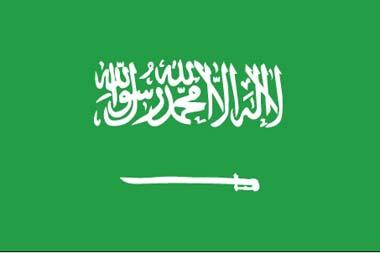Saudi Arabia
2009-08-19 17:32 BJTSpecial Report: Asia Pacific |
Facts & Figures
 |
| Saudi Arabia Flag |
Flag
green background, with in white letters the Muslim creed in Arabic: "There is no god but God: Muhammad is the Messenger of God."
Emblem
a date palm, representing vitality and growth, and two crossed swords, symbolizing justice and strength rooted in faith.
Location
southwest Asia, at the crossroads of Europe, Asia and Africa; extending from the Red Sea in the west to the Arabian Gulf in the east; bordered on the north by Jordan, Iraq and Kuwait, on the south, by Yemen and Oman, and on the east by the United Arab Emirates, Qatar and Bahrain.
Terrain
varied; fairly barren and harsh, with salt flats, gravel plains and sand deserts; a few man-made lakes but no permanent streams; in the south, the Rub Al-Khali (Empty Quarter), the largest sand desert in the world; in the southwest, mountain ranges of over 9,000 feet.
Climate
June through August, over 110 degrees Fahrenheit midday in the desert; humidity in coastal regions up to 100 percent; elsewhere, mild; possible winter temperatures in the northern and central regions dropping below freezing; rainfall, from none at all for up to 10 years in the Rub Al-Khali, to 20 inches a year in the mountains of Asir Province.
Population
as of the 2004 census, 22.7 million, including about 6 million expatriates.
Religion
Islam, which is the basis of the legal system and of government.
Language
Arabic; English widely spoken in urban areas.
National Day
September 23, commemorating the foundation of the modern Kingdom of Saudi Arabia in 1932.
Rulers
King Abdulaziz bin Abdelrahman Al-Saud, the founder (1932-1963), followed by his sons: King Saud (1953-64), King Faisal (1964-75), King Khalid (1975-82), King Fahd (1982-2005) and the current ruler, Custodian of the Two Holy Mosques King Abdullah bin Abdulaziz, seen on the left with the late King Fahd and current Crown Prince Sultan bin Abdulaziz.

 Mail
Mail Share
Share Print
Print


 Video
Video









 2009 China Central Television. All Rights Reserved
2009 China Central Television. All Rights Reserved